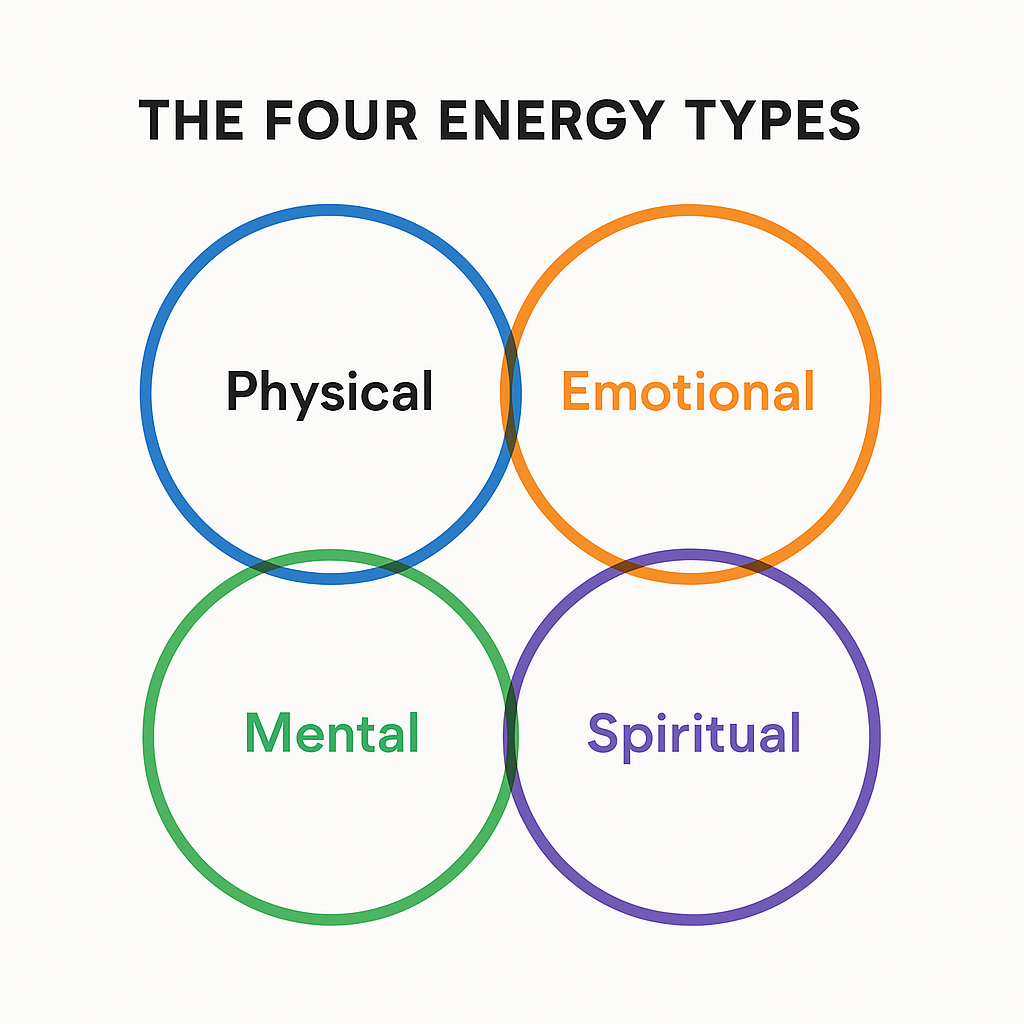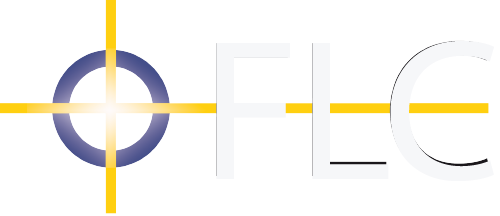Managing Energy, Not Time: The Real Edge in Leadership and Performance
Gina called and say, I need to tell you, “I’m exhausted.
Not tired. Exhausted.”
Gina, the acting bureau chief for a national research agency, and a client called me to say:
“I’ve got color-coded calendars. Productivity apps that slice my day into 15-minute chunks. I’ve even time-block like a Navy SEAL planning a mission. And yet here I am—busier than ever, armed with tools that promise to optimize every waking moment. But I still feel like you’re running on fumes. What do I do?”
Sound familiar?
Here’s what nobody wants to admit: all those time management systems? They’re solving the wrong problem.
Time isn’t a constraint you can manage. Energy on the other hand, is something you have agency over.
The Day I Stopped Chasing Hours
I’ll never forget sitting across from Maria, a brilliant VP at a tech startup. She’d just walked me through her perfectly orchestrated schedule—back-to-back meetings from 7 AM to 7 PM, color-coded by priority, with travel time calculated to the minute.
“So where’s the problem?” I asked.
She laughed, but it was hollow. “I’m dying. I show up to every meeting, but I’m not really there. By 2 PM, I’m just a well-dressed zombie nodding along.”
That’s when it hit me. Maria wasn’t failing at time management. She was succeeding at it—and it was killing her.
Time isn’t the real game. Energy is.
The Shift That Changes Everything
Back in 2003, performance psychologist Jim Loehr and journalist Tony Schwartz dropped a bomb on the productivity world with The Power of Full Engagement. Their thesis was simple but revolutionary:
“Managing energy, not time, is the key to high performance and personal renewal.”
Wait. What?
Instead of worshipping at the altar of the calendar, they said focus on four types of energy:
Physical energy — your stamina, rest, nutrition, movement.
Emotional energy — positivity, resilience, how you handle stress.
Mental energy — focus, clarity, your capacity for deep work.
Spiritual energy — connection to values, purpose, meaning.

Their research showed something that should make every grinding leader pause: ten high-quality, energized hours destroy forty depleted ones every single time.
Think about it. When was the last time you accomplished meaningful work while running on empty? When did your best ideas come to you during hour twelve of a “productive” day?
Right. They didn’t.
Enter the Time Warrior
Now, here’s where Steve Chandler comes in with his cult classic Time Warrior. On the surface, it looks like another time management book. It’s not.
Chandler’s “warrior” isn’t about scheduling. It’s about cutting through the mental fog that keeps you spinning.
His mantra? Do things now, or don’t do them at all.
Kill the procrastination. Stop dragging half-finished commitments into tomorrow. Refuse the paralysis of endless planning.
“A warrior is not about busyness. A warrior is about decisive energy.”
Here’s what clicked for me: Chandler gives you the tempo. Loehr and Schwartz give you the fuel. Put them together?
You build and renew your energy—then deploy it like you mean it.
Why This Matters More Than Ever
Let me ask you something: when you show up depleted to a meeting, how does the room feel?
I worked with a CEO—let’s call him James—who prided himself on being first in, last out. Eighteen-hour days were his badge of honor. But his team started avoiding him after 3 PM because, in his words, “I turn into a bit of an asshole when I’m fried.”
That’s the hidden cost of energy bankruptcy. It’s not just your performance that tanks—it’s everyone around you.
Consider three realities pressing on today’s leaders:
1. Busyness Is a Performance Killer
Your calendar can be packed wall-to-wall, and your impact can still flatline. Without emotional presence, mental sharpness, and physical vitality, you’re just logging hours. You’re not leading—you’re performing the theater of leadership.
2. Your Energy Sets the Temperature
Leaders don’t just manage their own energy—they’re the thermostat for everyone else. When you walk into a room scattered and frazzled, that energy spreads. When you show up clear and steady? That multiplies too.
Culture isn’t created by motivational posters. It’s transmitted through the energy you bring to every interaction.
3. Renewal Isn’t Weakness—It’s Strategy
High performance depends on oscillation. Push hard, then recover. Sprint, then rest. This isn’t a nice-to-have—it’s how elite athletes, musicians, and yes, leaders, sustain excellence.
James learned this the hard way. After his team’s performance started sliding, he finally admitted: “I thought grinding harder was leadership. Turns out, I was modeling burnout.”
From Theory to Action: How to Actually Do This
Okay, enough philosophy. How does this look in real life?
Start With an Energy Audit
For one week, forget tracking your time. Track your energy instead.
Ask yourself:
- When do I feel sharpest?
- What activities drain me fastest?
- What actually restores me? (And don’t say “vacation”—what can you do daily?)
Maria did this exercise and discovered something surprising: her energy tanked after lunch not because of food, but because that’s when she scheduled all her difficult conversations. By 2 PM, she was emotionally spent.
Match Your Tasks to Your Energy Cycles
Stop wasting your peak hours on email triage.
Do your most important work when your mental energy is highest. Save the administrative stuff for when you’re coasting anyway.
One client moved all his strategic thinking to 6 AM—before the chaos hit. Another blocks out her 10 AM to noon window for deep work, no exceptions. They’re not optimizing their time—they’re optimizing their energy deployment.
Build Rituals for Renewal
World-class performers have rituals. Not just morning routines—recovery rituals.
What restores you? Maybe it’s a walk between meetings. Maybe it’s five minutes of actual silence. Maybe it’s calling someone who makes you laugh.
The key? Schedule these like your most important meetings. Because they are.
Manage Your Emotional Energy
Here’s what nobody talks about: emotions are fuel. If you leave a meeting feeling resentful or drained, that’s an energy leak that will haunt your next three interactions.
Build practices for emotional resets. Quick breathing exercises. Reframing questions. Sometimes just a strategic pause to ask yourself: “What energy do I want to bring to the next moment?”
Lead With Energy Awareness
Pay attention to faces when you speak. Do people leave your office clearer and more focused? Or stressed and scattered?
That’s your energy signature as a leader. And it’s either multiplying your impact or sabotaging it.
The Warrior Integration
Now here’s where Chandler’s warrior mindset becomes essential. You can have all the energy rituals in the world, but if you’re still procrastinating, ruminating, or spinning in analysis paralysis, you’re just a well-rested underperformer.
Energy without decisiveness is wasted fuel.
That’s where the warrior comes in:
- Kill hesitation
- Decide in the now
- Take the next action
When you integrate both—energy cycles plus warrior clarity—you become something rare: a leader who is both renewable and unstoppable.
The Future Belongs to Energy-Aware Leaders
Here’s what I know: AI can compress hours of routine work into seconds. Productivity hacks are getting commoditized. What’s left—the real differentiator—is the energy and presence you bring to what only humans can do.
Leading. Creating. Inspiring. Repairing relationships when they break.
This is why managing energy isn’t just a productivity tactic. It’s a leadership imperative.
Leaders who ignore this will burn out or fade into irrelevance. Leaders who master it will outlast and outperform—not because they have more hours, but because they show up fully to each one.
One Last Thing
Time ticks away, indifferent and unyielding. But energy? Energy is alive. It can be built, squandered, multiplied, or renewed.
If you want to lead with real impact, stop asking how to manage your time. Start asking how to amplify your energy—and then deploy it like a warrior: decisive, present, and fully engaged.
That’s not just productivity.
That’s power.
Need to talk to Lisa? CLICK HERE









